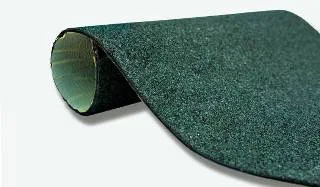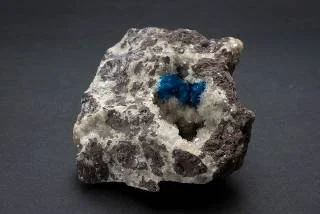Basalt fiber
Basalt
fiber is a component made from the finest fibers of basalt, a combination of
plagioclase, pyroxene, and olivine minerals that is similar to fiberglass and have
better physical and mechanical properties than fiberglass but is significantly
cheaper than carbon fiber. It is a green, healthy, and environmentally friendly
high-tech fiber product that is made without environmental pollution. It is
widely used in military and civilian cases for making dresses and other things.
It has great theoretical significance, but also great strategic significance
for strengthening the basalt fiber and its compounds. Compared with glass fiber, carbon fiber, and aramid fiber, basalt fiber has good mechanical
properties, acid-alkali resistance, excellent electrical properties, high wave
permeability, non-conductive, excellent sound insulation, and insulation
performance.
Based
on the above advantages, the combination of basalt fiber and substrate can
improve the properties of the material. Based on the above properties, basalt
fiber and its composites can be made into high-temperature and low-temperature
protective clothing and sound insulation materials used in the sound absorption
and thermal insulation industries. It can be widely used for manufacturing
brakes, electrical, electromagnetic, and its unique properties. It is used as a
fire-retardant textile in the aerospace and automotive industries and can be
used as a compound to produce products such as camera tripods.
Basalt fiber properties
i.
Basalt fiber is a component made from the finest fibers of basalt
ii.
Its fiber diameter (μm): 9
iii.
Its specific gravity: 2.65
vi.
It has high thermal resistance (thermostability) and low flammability
v.
It has low-strength degradation at temperatures as low as − 200 to 250 °C and
as high as + 700 to 900 °C, and of high humidity.
vi.
Its operative temperature (°C): –200 to + 900
vii.
It has high thermal and acoustic insulation properties
viii.
It's soundproofing for 400–1800Hz: 80–95%
xi.
It has excellent adhesion to polymer resins and rubbers
x.
It has relatively high mechanical strength, abrasion resistance, and elasticity
xi.
Its tenacity (N/tex): 0.67–0.93
xii.
Fiber extension at break (%): 3.1
xiii.
Its initial modulus (N/tex): 30–35
xiv.
It has high dielectric properties
xv.
Its moisture regain (%): 1
xvi.
It has low water absorption properties
xvii.
It has high chemical resistance (especially to concentrated acids-based
materials)
xviii.
It is ecologically clean and non-toxic.
Basalt fiber source
Basalt
is a type of igneous rock that is formed by the rapid cooling of lava on the
planet's surface. It is the most common rock in the earth's crust. The characteristics
of basalt rock vary from lava source, to cooling rate, and historical exposure to
the material. High-quality fibers are made from basalt deposits with uniform
chemical makeup. Basalt and glass fiber production are similar. The only raw
material needed to make crushed basalt rock fiber. It is an unbroken fiber
formed by melting volcanic basalt rock at approximately 1,500°C. Although the
temperature required to make fiber from basalt is higher than that of glass,
some researchers have reported that less energy is required due to the thermal
uniformity of fibers made from basalt.
Manufacturing process
Basalt
fiber is made from a single material, crushed basalt, from a carefully selected
quarry source. High acidity basalt (more than 46% silica content) and low iron
content are considered preferable for fiber production. Unlike other
composites, such as glass fiber, basically, no materials are added during its
production. Basalt is simply washed and then melted.
Basically,
the preparation of basalt fibers can be outlined in the following steps: raw
material preparation, stone melting, melting homogeneity, spinning of fibers,
and finally size application. Rock melting for basalt fiber production is more
challenging than melting preparation for glass fiber production. This is due to
the low thermal conductivity and low transparency of the infrared (IR)
radiation of the basalt fiber. IR radiation is also called heat radiation and a
component that has good transparency in heat radiation is uniformly warmer
and more easily liquefied. For this reason, clear glass is easier to melt than
IR-opaque basalt. Preheating at 1450°C is required to reach the melt of basalt
rock. Another challenge when preparing for basalt smelting is the potential
incompatibility of natural basalt stone. Adequate temperatures for spinning
basalt fiber have been reported to be between 1350-1420°C.
Basalt
fibers typically have a filament diameter of 10 to 20 μm above the respiratory
limit of 5 μm so that the basalt fiber can be properly replaced with asbestos.
They also have a high elastic modulus, resulting in a high specific strength -
three times that of steel. Thin fiber is commonly used for the production of
woven fabrics mainly for textile applications. Thick fiber filaments are used
in windings, for example, to make compressed natural gas (CNG) cylinders or
pipes. The thickest fibers are used in the form of cut strands for pultrusion,
geogrid, unidirectional fabric, multiaxial fabric production, and concrete
reinforcement. One of the most probable applications for continuous basalt
fiber and the most modern trend at the moment is the production of basalt rebar
which further replaces the traditional steel rebar in the construction market.
Basalt fiber advantages
i.
Basalt fiber has 15-20% higher elastic power and modulus than other fibers.
ii.
It has excellent substance resistance to water, salts, alkalis, and acids.
iii.
It is nature-friendly and based on naturally occurring material that starts
worldwide and has no biological danger.
iv.
It has recyclability.
v.
Its production cost is very low in comparison with the other types of fibers.
vi.
It's melting temperatures and working temperatures are up to 600 °C.
Basalt fiber disadvantages
i.
Fiber made from basalt is more expensive than E-glass.
ii.
The American Concrete Institute, the Canadian Standards Association, the
International Federation for Structural Concrete, and other internationally
recognized engineering code authorities have not provided specific design
guidelines for its use.
Basalt fiber Applications
i.
A wide range of applications in basalt and its products include its use in
civil engineering, automotive, boat building, wind turbine blades, and sporting
goods.
ii.
It can be used due to its strong application in sound insulation construction
materials such as tubes, bars, pipe fittings, internal heat and floor, walls,
frame walls, boiler shells, tanks, chimneys, fire protection structures, etc.
iii.
High-quality basalt roving, cloth, and cutting strands are used in the
production of CNG cylinders, brake pads, mufflers, headliners, and other parts
for internal applications in the automotive industry.
iv.
Toyota car mufflers use heat-resistant basalt fiber.
v.
Its products can be used for chemical and wear-resistant protective coatings
for tanks, pipelines, high-pressure vessels, waste-water filters, and
corrosion-resistant tanks and pipes.
Conclusion
Basalt
fibers have great potential to be the next generation of materials. Formed
from single-material raw materials, basalt fibers are superior to other fibers
in terms of thermal stability, heat and sound insulation properties, vibration
resistance, and durability. Basalt fibers and composites have potential
advantages for a variety of applications. Basalt fiber is considered an
environmentally friendly and non-hazardous substance. It is not a new material,
but its applications have certainly been innovative and its good mechanical,
chemical, and thermal performance has made it possible to use it in a wide range
from building and construction to energy efficiency, from automotive to
aeronautics. Therefore, basalt has gained increasing attention as a reinforcing
material, especially compared to traditional glass fibers.













0 Comments